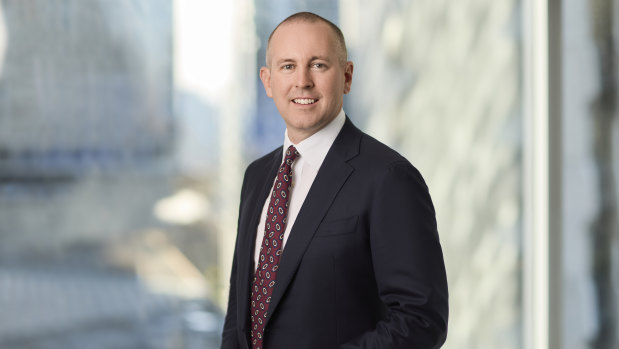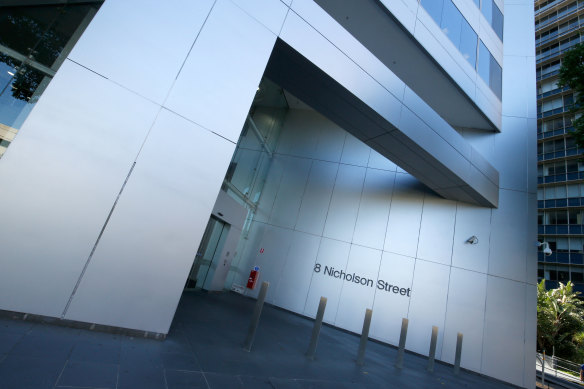Australia’s CBDs lose out to the fringe in war for workers
Employees are more willing to commute and work in an office when it’s located on the CBD’s fringe says the boss of a large property fund citing leasing data to back up its claim.
Ross Lees, the newly minted chief executive of Growthpoint Property, said leasing in his fund’s large office portfolio is pointing to greater workplace participation by employees in city fringe markets. Anecdotal evidence from corporate recruitment firms also points to a similar trend.

Growthpoint Property’s Ross Lees is optimistic about the prospects of all major property asset classes.Credit:
“They [recruitment firms] are seeing the bulk of their new business coming from markets like Cremorne and Richmond [in Victoria], where all the tech firms are establishing themselves,” Lees said.
Growthpoint’s strategy of owning and leasing out office blocks in key metro areas on the fringe of Brisbane, Melbourne and Sydney’s CBDs appears to be paying off.
“There’s a much higher vibrancy in those markets than in the CBDs and, particularly, Docklands at the moment. Melbourne’s fringe is one of the top two in Australia that has the highest net absorption since COVID. Melbourne CBD is one of the worst,” Lees said.
Places like Richmond and South Melbourne in Melbourne, or Brisbane’s Fortitude Valley and South Brisbane, had the highest net absorption of office space across all national office markets over the last four years, figures show.
Sydney and Melbourne’s CBDs, conversely, have gone backwards, with more tenants giving up space than new ones arriving.
“Melbourne’s a tricky market at the moment. There are higher levels of work from home than in other states, and also a higher unemployment rate. It’s probably the hardest market in Australia,” he said.
Sydney’s key financial CBD core is strong, North Sydney and Parramatta have some challenges, while Macquarie Park is reasonable. Unlike other capital cities, “the trickiest market in Sydney is the near-city fringe, where there’s a bit of a hole,” Lees maintains. Further out at Olympic Park, where Growthpoint owns a building at 5 Murray Park Avenue, vacancy rates are also high.
The company’s quarterly results show office occupancy ticked down 1 per cent after a tenant departure in Brisbane, although that market is one of the best performing in Australia. Leasing of vacant space at Sydney Olympic Park and Dorcas Street in South Melbourne remains challenging, but progress is being made with the delivery and let-up of speculative suites, analysts at money manager Moelis Australia said.
Dexus, in a first quarter update this week, said its office occupancy was lower at 93.5 per cent, down from 94.8 per cent at the end of the previous financial year. Leasing volumes were almost half the five-year quarterly average at 22,000 square metres.
UBS analyst Tom Bodor and associates pointed to Dexus’ falling incentives as a positive trend. Incentives trended down to 26.3 per cent (versus 27.9 per cent) confirming recent more positive market data, Bodor said.
“We see the following trends driving the first quarter metrics: 1) more small leases in ... [the quarter] which typically carry lower incentives and 2) a skew to the premium Sydney core and Brisbane markets, which are showing relative outperformance,” he said.
Dexus chief executive Ross Du Vernet, who took over the top job in March, attributed the group’s lower occupancy to an “anticipated expiry” at its 80 Collins Street office in Melbourne.

Incentives in Dexus’ offices trended down to 26.3 per cent (versus 27.9 per cent), confirming recent more positive market data.Credit: Darrian Traynor
Property giant Mirvac said last week occupancy across its office portfolio is 95.1 per cent. It leased 18,200 square metres during the September quarter, much of it in Melbourne’s Collins and Bourke Place.
Lees is optimistic about the prospects of all major property asset classes.
Occupancy in Growthpoint’s industrial portfolio is near 100 per cent, retail stands at 98 per cent and its offices are leased at 92 per cent capacity. Strong population growth and high occupancy rates, coupled with construction costs slowing the replacement of buildings, “should fuel growth for most asset classes,” he said.
The company earlier this month sold its stake in the Dexus Industria REIT for $131.7 million. It also offloaded a $181 million interest in six warehouses to Nasdaq listed real estate platform TPG and created a new investment platform with the US fund.
“[That’s] a deliberate step to demonstrate our commitment to funds management and growing with partners,” Lees said.
“It’s also given us some capital back on our balance sheet to help support some growth.”
The Market Recap newsletter is a wrap of the day’s trading. Get it each weekday afternoon.